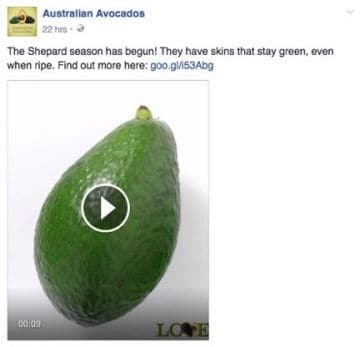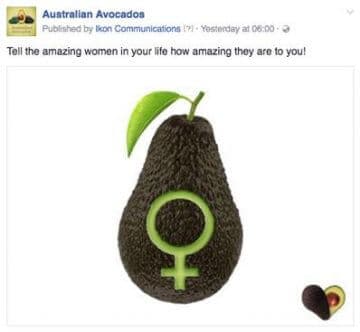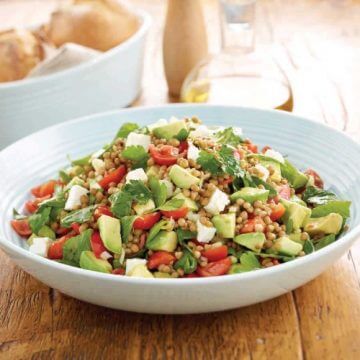This update was provided by Horticulture Innovation Australia for Guacamole 20 March 2017.
As part of the strategy to inspire, engage and educate, a mix of delicious recipe ideas, relatable content and key messages were delivered via social media over the past two weeks.
Helping consumers understand how to identify and select a Shepard avocado: this benefits all growers regardless of variety, as the more consumers feel confident with avocados in general, the more comfortable they will be in selecting one that meets their needs. Education = confidence = better consumer experience = repeat purchase.

Post: “The Shepard season has begun…” on 2nd March 2017.
Ad Metrics:
Reach – 168,520
Comments – 235′
Likes – 921
Reactions – 89
Shares – 68
Video Views – 52,175

A shout out to women in lieu of International Women’s day:
Post: “Tell the amazing women in your life…” on 5th March
Ad Metrics: Reach – 214,449 Comments – 281
Likes – 1,183
Reactions – 58
Shares – 44

Simple, delicious meal inspiration……
Post: “You’re stuffed? Stuff ‘em too!…” on 7th March 2017.
Ad Metrics:
Reach – 259,306
Comments – 409
Likes – 4,757
Reactions – 259
Shares – 313

Nutritional meal solution for Mum’s with young babies.
Post: “Baby’s first avo. All the info you need here…” on 12th March 2017.
Ad Metrics:
Reach – 54,345|
Comments – 41
Likes – 813
Reactions – 28
Shares – 24
Part of the Communications strategy is to work with partners who have a strong legion of followers to extend our content through and reach more consumers. One of such partners is content publisher “My Food Book” who promote recipes from top cooking & food brands to more than 2.8 million passionate home cooks each month and over 200,000 subscribers.

Avocado recipes, video files and product information is housed across their website and social channels to amplify our content reach.
Recently, this Avocado & lentil salad has been inspiring consumers.


†Recipe page views since activation of your current subscription year. *Social activity across pinterest, G+ and facebook since listing this recipe with myfoodbook as part of your subscription. Social figures do not include Twitter. ‡Actions on recipe: recipe saved into consumer account, exported as an ebook or shared by a consumer, since activation of your current subscription year.
Avocados feature in the latest e-cookbook “Good for you” released on 27th January this year. Of the 21 recipes, 9 of them feature avocados. There have been 18.5K downloads of the cookbook to date.
